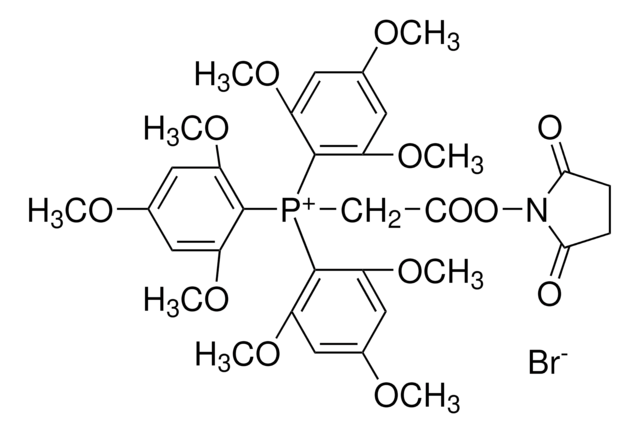31267
Trichloressigsäure
PESTANAL®, analytical standard
Synonym(e):
TCA
About This Item
Empfohlene Produkte
Qualität
analytical standard
Dampfdichte
<1 (vs air)
Dampfdruck
1 mmHg ( 51 °C)
Produktlinie
PESTANAL®
Haltbarkeit
limited shelf life, expiry date on the label
Methode(n)
HPLC: suitable
gas chromatography (GC): suitable
Brechungsindex
n20/D 1.62 (lit.)
bp
196 °C (lit.)
mp (Schmelzpunkt)
54-58 °C (lit.)
Löslichkeit
soluble 81.7 g/L at 20 °C (completely)
Dichte
1.62 g/mL at 25 °C (lit.)
Anwendung(en)
agriculture
cleaning products
cosmetics
environmental
food and beverages
personal care
Format
neat
SMILES String
OC(=O)C(Cl)(Cl)Cl
InChI
1S/C2HCl3O2/c3-2(4,5)1(6)7/h(H,6,7)
InChIKey
YNJBWRMUSHSURL-UHFFFAOYSA-N
Suchen Sie nach ähnlichen Produkten? Aufrufen Leitfaden zum Produktvergleich
Anwendung
Rechtliche Hinweise
Signalwort
Danger
H-Sätze
Gefahreneinstufungen
Aquatic Acute 1 - Aquatic Chronic 1 - Eye Dam. 1 - Skin Corr. 1A
Lagerklassenschlüssel
8B - Non-combustible corrosive hazardous materials
WGK
WGK 2
Flammpunkt (°F)
>235.4 °F - closed cup
Flammpunkt (°C)
> 113 °C - closed cup
Persönliche Schutzausrüstung
Eyeshields, Faceshields, Gloves, type P3 (EN 143) respirator cartridges
Choose from one of the most recent versions:
Besitzen Sie dieses Produkt bereits?
In der Dokumentenbibliothek finden Sie die Dokumentation zu den Produkten, die Sie kürzlich erworben haben.
Unser Team von Wissenschaftlern verfügt über Erfahrung in allen Forschungsbereichen einschließlich Life Science, Materialwissenschaften, chemischer Synthese, Chromatographie, Analytik und vielen mehr..
Setzen Sie sich mit dem technischen Dienst in Verbindung.







